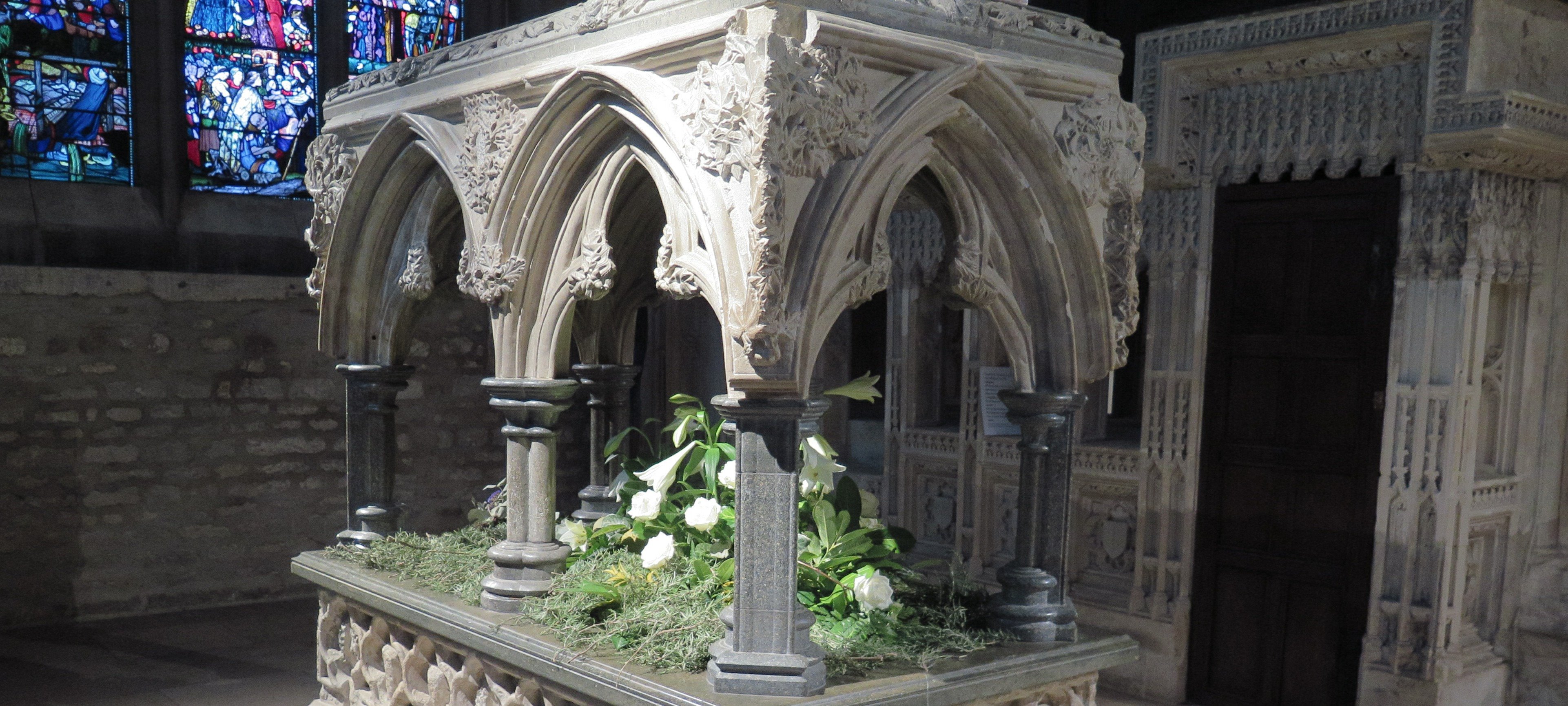Who was St Frideswide? Pre - Conquest records
Foundation charter of St Frideswide’s monastery, 1004
The first mention of the name Frideswide is in the foundation charter of Ethelred II (the Unready) dated 17th December 1004. It can be found in the Cartulary of the Monastery St Frideswide, edited by Rev Spencer Robert Wigram, Vol 1, 1895. It is in Latin and this information is derived from the translation appearing in the Early History of Oxford 727-1100, James Parker 1885 p142.
The charter states that it was issued by King Ethelred from his palace at Headington and it is signed by the King, the Archbishop of Canterbury, the Archbishop of York, the Queen (Emma of Normandy), his heir Prince Athelstan as well as 1 prelate, 5 bishops, 2 ealdormen, 2 abbots, 10 earls and 1 thane. (One of the earls is Aelfgar, earl of Mercia, whose name was later used as the name of Frideswide’s importunate lover).
Early History of Oxford James Parker p323 gives the introduction and prologue from the Oseney Register, also present in the Cartulary just before the charter. It was printed in 1682, but the date the prologue was added is not recorded. It was undoubtedly from a later date than the charter itself as it refers to the 12th century legends, describing them as chronicles.
Introduction before prologue. James Parker Appendix A, No. 29
‘Set out here is the registered charters and documents of the Monastery of St Frideswide of Oxford, renewing the foundation of that same place which was destroyed by fire. It includes all the churches, properties, land, tenements, jurisdictions, liberties, accustomed privileges, rural services, restorations, portions, pensions and whatever possessions are pertaining to the said Monastery, according to the order outlined below.’
Prologue continued - Early History of the Monastery. James Parker Appendix A No 29. Translated p91
'It is to be noted that Didanus, formerly king of Oxford, reigned about the year of the Incarnation of our Lord seven hundred twenty-seven (as evident in chronicles). This King Didanus was the father of St Frideswide, who gave to her this place which she had desired and caused the nun's habit to be given to her. He constructed a church and, near it, various buildings most suitable to religion, as appears in the Life of the Holy Virgin.
Also it appears there, that the same Virgin peaceably obtained the place which was then called Thornebirie, but now Benseia ; for in concealment there a fountain sprung forth in answer to her prayers, and she cured one who was vexed of a devil, and another whose hand had clave to an axe. Sometime after the glorious death of S. Frideswide, the nuns having been taken away, secular Canons were introduced.
Afterwards, in the year of grace 1004, King Ethelred ordered all the Danes of either sex then inhabiting England to be killed, and all those who had fled thither were burnt at Oxford, together with the Church, the Books and Ornaments, as appears from the Charter of King Ethelred, which follows in this wise.’
Charter of King Ethelred II of the restored Monastery of St Frideswide at Oxenforde: James Parker Appendix A No 29. Translated p92
' In the Year of our Lord 1004, in the second indiction and in the twenty-fifth year of my reign, according to the disposal of God's providence, I Aethelred ruling over the whole of Albion have, for the love of the Almighty, established with liberty of charters and by royal authority a certain monastery situated in the city which is called Oxoneford, where the body of St. Frideswide reposes, and have recovered the lands which belonged to the said monastery of Christ by the restoration of this new book [of charters] …’
(For the rest of the foundation charter see 1002 - Destruction of St Frideswide’s Church)
Other pre- Conquest records of St Frideswide
Frideswide and her Times, FM Stenton, Oxoniensia, 1936, p104 records:
A second mention of her occurs in the Liber Vitae (book of lives) of Hyde Abbey, just outside Winchester, which simply states that ‘Frideswide rests in Oxford’.
This record is not dated in the source.
